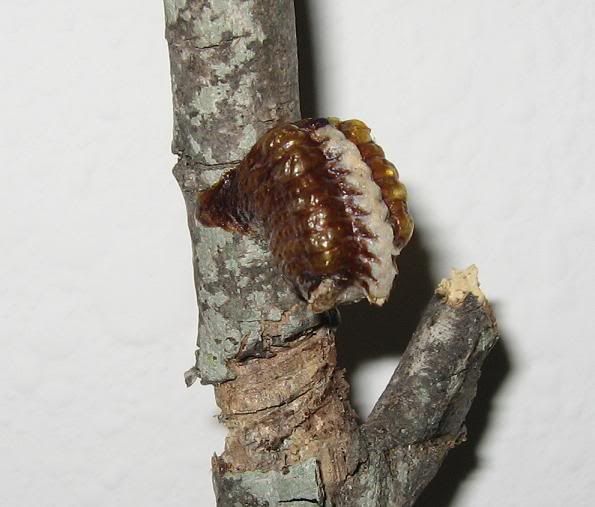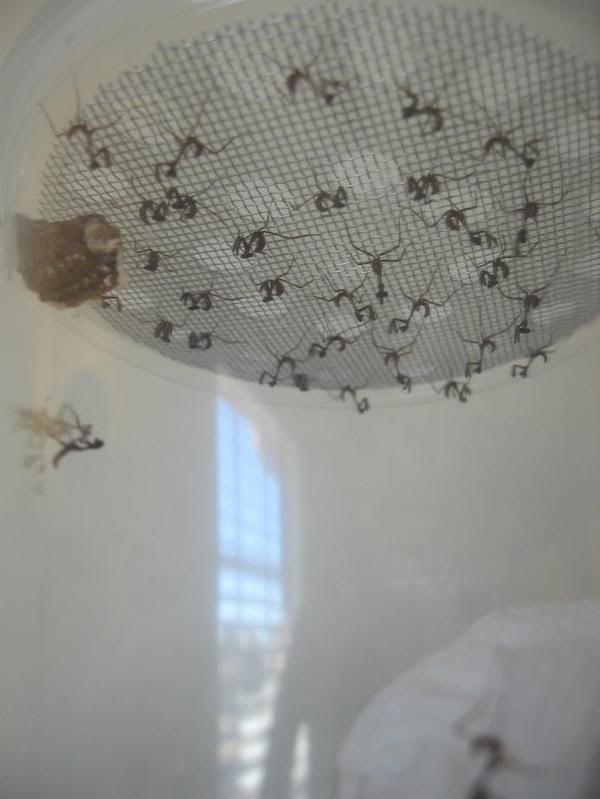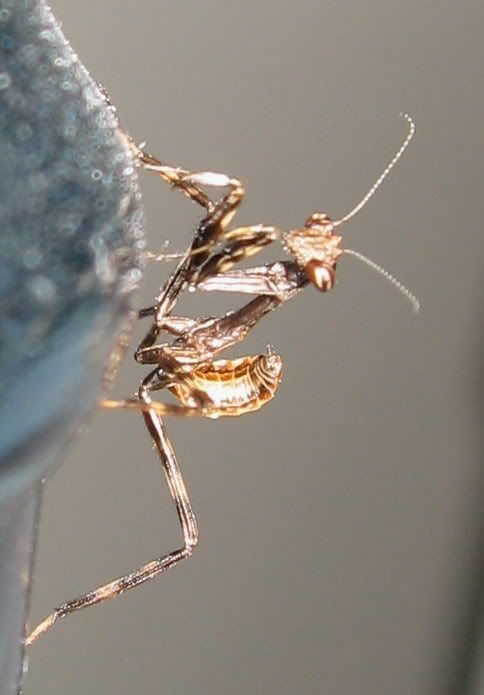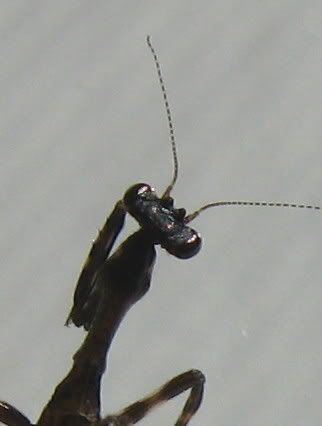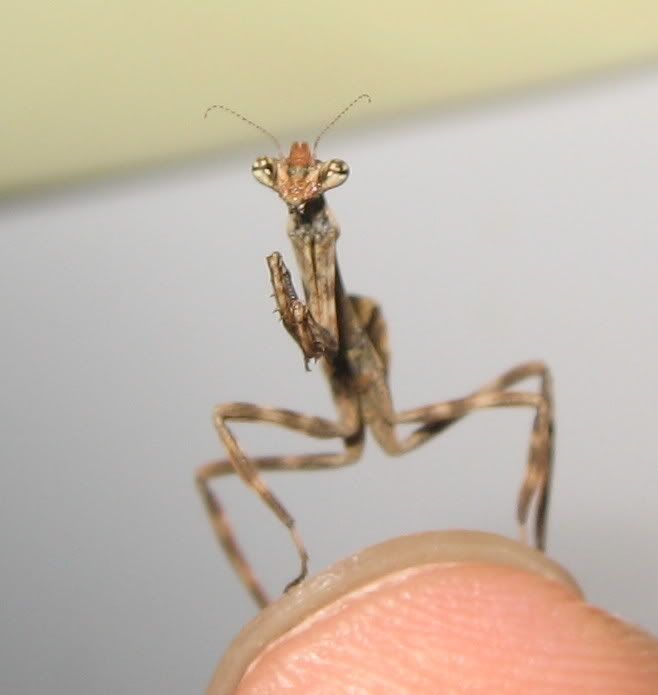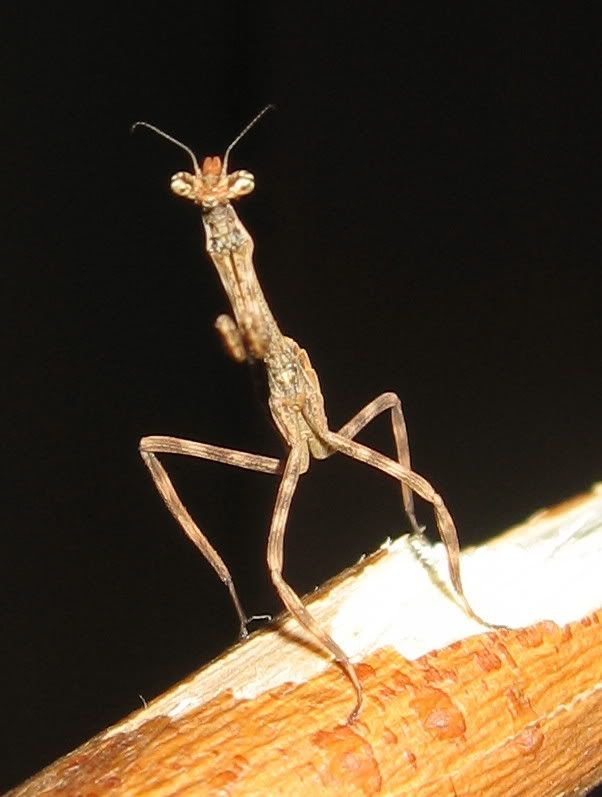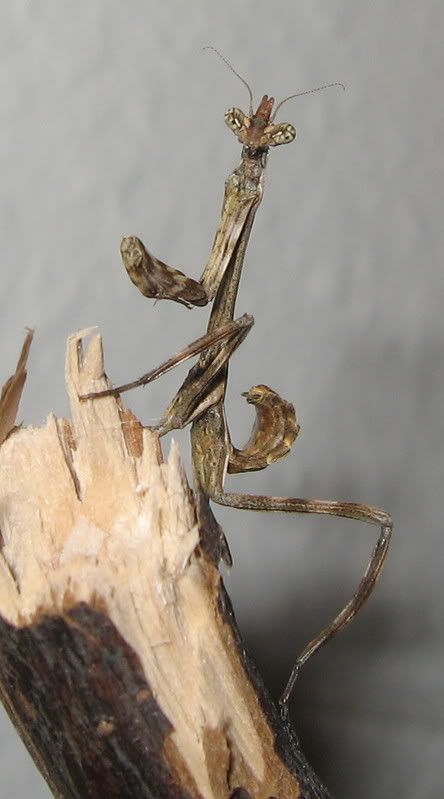Apparently, Phyllovates chlorophaea is not uncommon (as compared to Pseudovates Arizonae) in southern Texas especially area along Mexico border. I received an e-mail from an insect expert there, some good info for anyone who likes to keep this species. Here it is;
I have been finding the species with great regularity here at Bentsen-Rio Grande Valley State Park. Since mid-October I have seen one or more individuals virtually every day in our butterfly garden, usually lurking near the flowers of Eupatorium odoratum or similar plants, often eating some pollinating insect. I have also encountered them many times at night in the park maintenance yard, where a particularly bright light tends to accumulate large numbers of insects, on which the mantids then feed. I have yet to observe any outside of our park, and also have yet to see one ovipositing. I have not seen mating in progress but have encountered males and females close together on plants a couple of times (I have photos of that too, have not had time to post them to the Guide yet). I have encountered a few late-instar nymphs but noticed no really young ones yet.
Climate conditions here are subtropical. Temperatures in the winter generally do not get lower than 40 degrees at night, and are regularly above 60 in the daytime. Summertime temperatures average in the mid- to high 90s in the daytime and lower 70s at night. In generally the air is dry, with most of our rainfall coming in September and early October, and humidity being higher through November than during the rest of the year. Note that Brownsville does get rain more frequently and have higher humidity than we do here in Hidalgo County, due do its closer proximity to the Gulf of Mexico.
Observations of this and other mantis species peaked following the September rains, but as these were observations of adult mantids, the nymphs may have been present unobserved much earlier in the summer. Also, as most of the observations have been around Eupatorium blooms, the adults may have been present earlier but less conspicuously because they were not being concentrated by the presence of the flowers and associated prey insects.
If you have any other questions, do not hesitate to ask.
Cheers,
Josh
Joshua S. Rose, Ph.D.
Program Specialist
World Birding Center
Bentsen-Rio Grande Valley State Park

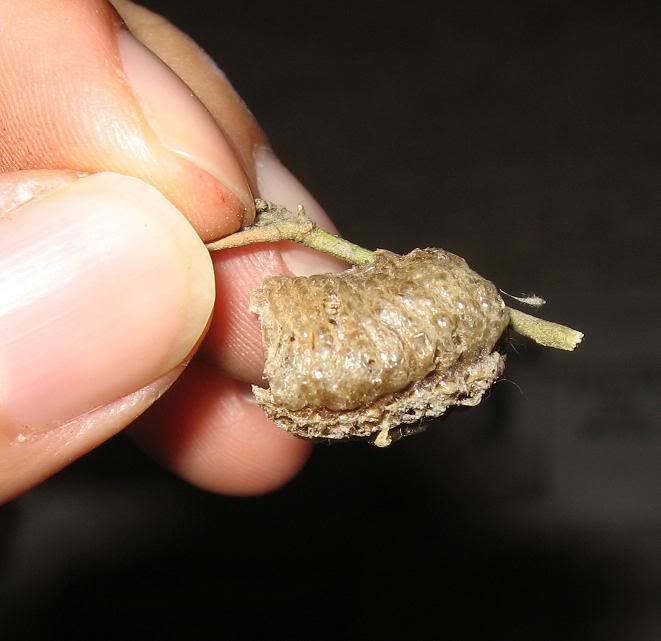
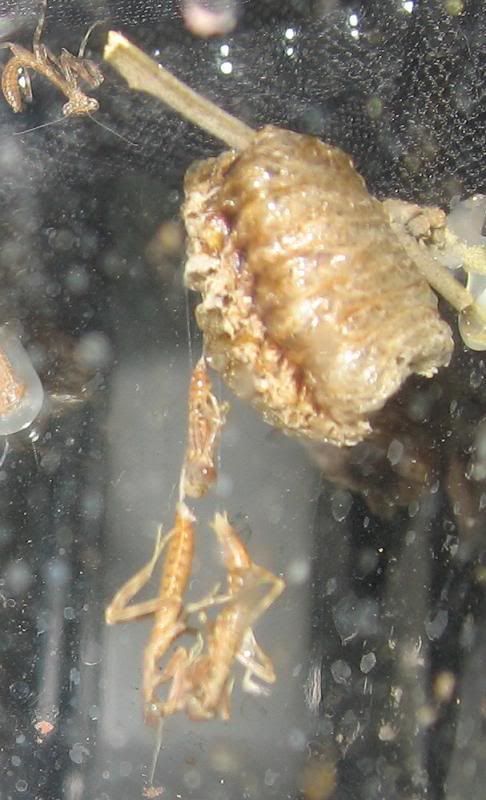







any suggestions?
